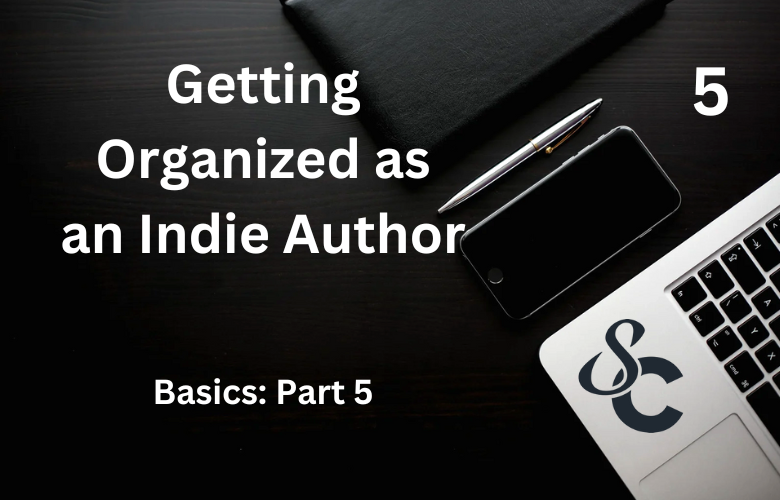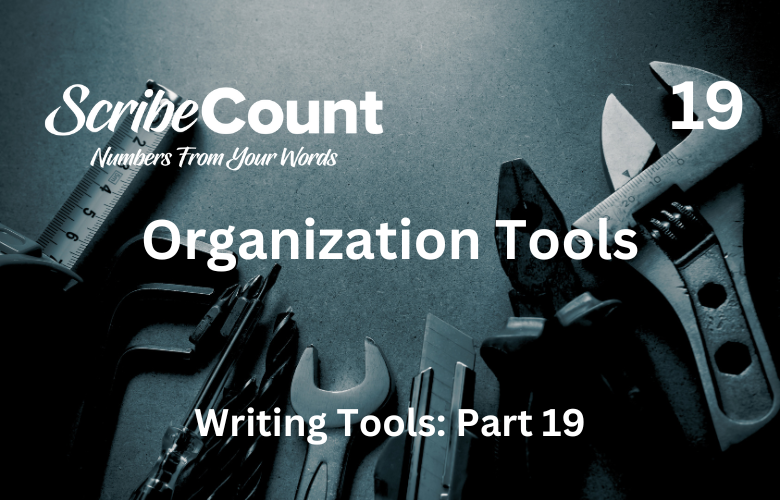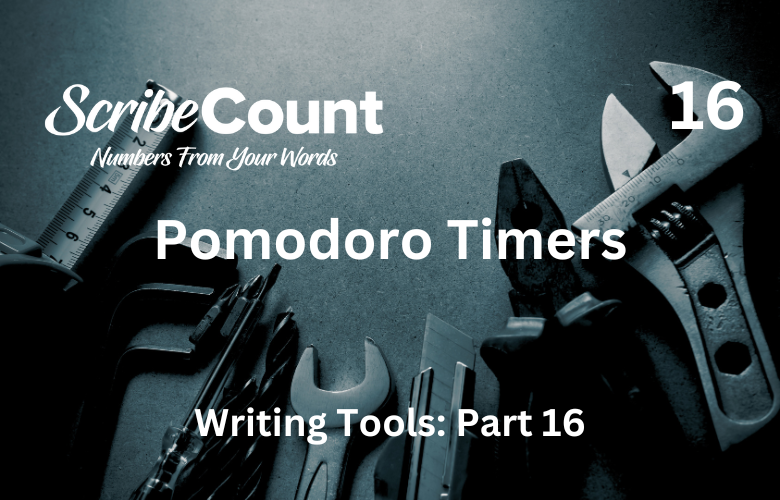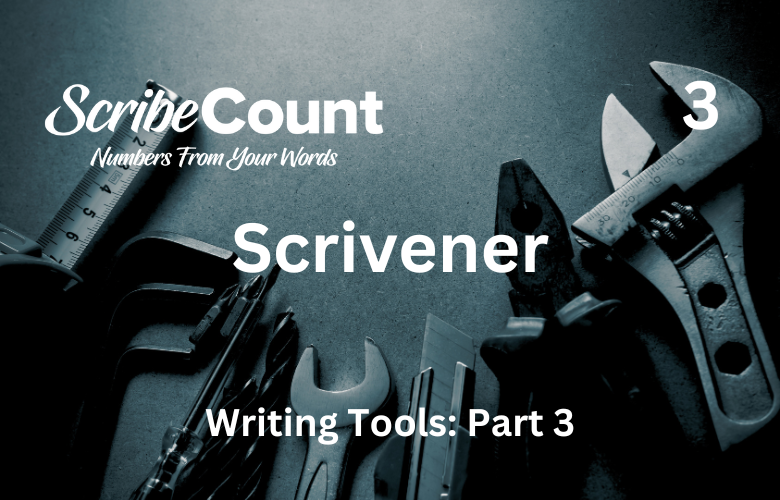Getting Organized as a Self-Published Author
Self-publishing offers unparalleled freedom, but with that freedom comes the need for organization. Managing every aspect of the publishing process—from writing to marketing—requires strategic planning, the right tools, and a bit of an attitude.
Task Saturation
Pilots have a fear of something known as Task Saturation. This occurs when a pilot has too many tasks to complete within a given time frame, leading to a decline in performance and an increased risk of error, often to the point that the plane they are in suddenly meets the ground.
This is the infamous crash and burn. Pilots experiencing Task Saturation often progress to task fixation where they are unable to process data and make compounding errors. They find themselves working harder but accomplishing less. Task saturation can be caused by a number of factors, including information overload, technology proliferation, and being told to do more with less.
Being an indie author involves juggling several tasks at once, which are split between creative tasks and routine business tasks. Studies have shown that switching between these types of tasks causes a significant delay in focus, which can be as much as 20 minutes or more.
When studying the creative process, researchers deduced that Inefficient Time Management and Distraction were the two biggest enemies of the indie author. We creative types seem to like long periods of uninterrupted time to produce our masterpieces. Who knew??

So how does an Indie Author get as much content out of their time while also taking care of the nuts and bolts of running an Indie Publishing Business?
Fear not. Others have gone before you and figured out a few tricks. There’s also some tools and services out there to make the struggle a bit easier.
But first, let's focus on the elephant in the room. Time.
Time
Creating good content takes time. It's our greatest asset, but you’re constantly losing it, and you can never regain what you have lost. So you will need to control it, guard it, defend it, and sometimes fight for it.
The volume of tasks required of an indie author is large. If one were to examine that list every day it would seem overwhelming. It might feel as if you were on an assembly line that was going too fast for you to keep up with, but if you don’t, the whole thing falls apart and the business shuts down.
Controlling your time
Your task list should never control you; you must control it. The list is simply the things that need to be done. You are the one to decide the when and where and what amount of time you give to each task. Knowing yourself well is a major part of this. If you know that you write better in the early morning then that is when you should schedule that writing time. If you do better getting the business stuff off your plate first then schedule that accordingly.
Many writers utilize one of two matrices to determine what they prioritize.
THE EISENHOWER MATRIX:
The Eisenhower Matrix. This system divides your task list into four categories based on Urgency:
1. Urgent and Important (Do NOW)
2. Important but not Urgent (Schedule)
3. Urgent but not Important (Delegate)
4. Not Urgent and Not Important (Delete)
This system essentially categorizes tasks based on their Urgency, helping with prioritization. It works well for non-creative businesses. It’s geared toward Daily Planning and Decision Making.
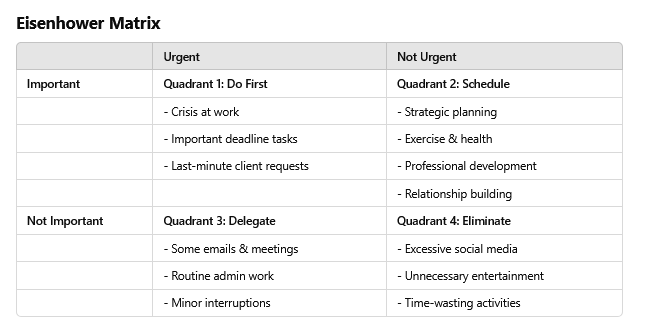
THE COVEY MATRIX:
This system is similar, but it bases the tasks on their Importance and the Time required to complete them.
1. Urgent and Important (Crisis mode, requires Immediate Action)
2. Important but not Urgent (Long-term planning and prevention)
3. Urgent but not Important (Delegate or Minimize)
4. Not Urgent and Not Important (Low Priority Task)
This system is ideal for writers as it bases the tasks on balancing long-term goals and immediate actions. Since “Write a book” and “Post a Facebook Ad” are vastly different in terms of time, this system works much better. Posting the Facebook ad is important, but without books to sell there’s nothing to advertise, so the writer will prioritize writing the next book first, and then post the ad only once they have completed their word-count goal for that day.
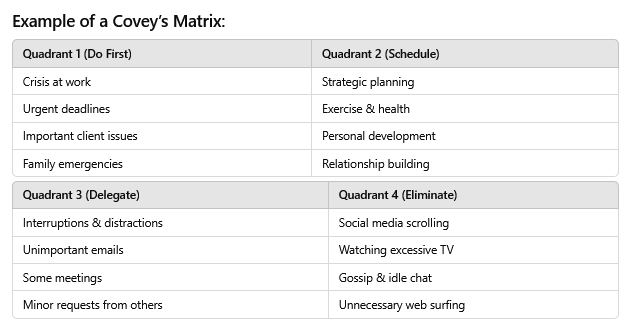
Short Version: The Eisenhower Matrix gets items off the task list as fast as possible, while the Covey Matrix prioritizes the task in relation to its overall impact on the performance of the business.
WIBBOW
When all else fails; apply WIBBOW.
Writers often ask themselves “Would I Be Better Off Writing?”
Nine times out of ten the answer is YES.
What’s urgent and what’s important, and how do I know the difference?
Is it Urgent?
1. Does it demand immediate attention?
2. Is it Time Sensitive?
3. Is it blocking you from moving on to the next task?
4. Will a delay in addressing it be costly?
Is it Important?
1. Does it have a lasting or permanent impact on the business?
2. How much value does it create or cost?
3. Does it support the business end goals?
Here we have an example of a Covey Matrix with common Author tasks assigned.
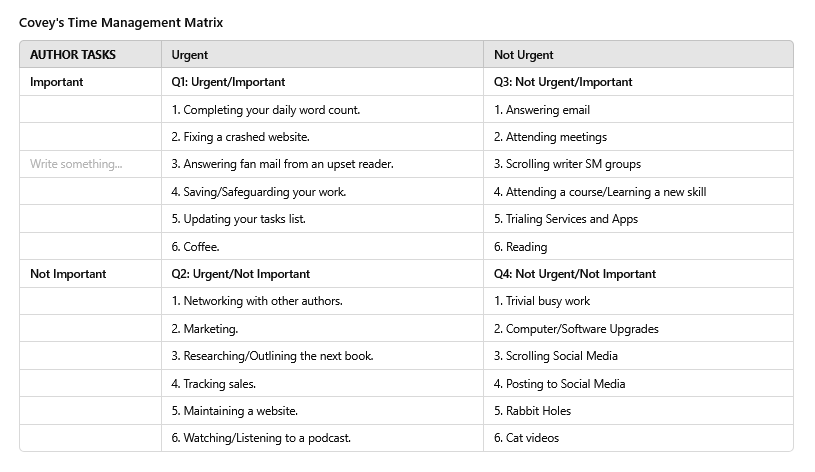
For Urgent Tasks you will need to allocate both time and effort. Writing that task down in a planner or entering it into an app is easy, but having the self-discipline to stay on task is harder, especially when no boss is keeping an eye on you. You’ll have to ensure that those tasks are each a high priority and that you concentrate on them. Avoiding procrastination (Authors are immensely proud of their procrastination skills), limiting interruptions, and staying on track are all critical to being a productive writer.
Interruptions:
As we mentioned earlier, interruptions can set an author back to the tune of twenty minutes or more. Limiting those interruptions, however, can be difficult. You will have to proactively guard your time from outside interruption. This may involve a sign on the door, a set of noise-canceling headphones, an electric fence, a blunt answering machine message, a repurposed playpen, and a silenced phone. Your levels may vary.
You will need to defend your time as well, often from the people you hold most dear. There may be some training involved. Countless authors have had to instruct/train family members repeatedly that their writing time is theirs, and just because they are “sitting at home all day” does not mean they can drop what they are doing to run an errand for them or help them with a task of their own. Making it clear from day one that you will be unavailable from X am to Y pm will keep things from getting out of hand and everyone staying on friendly terms.

Email:
Are you ever really done with email?
According to a Canadian study, the answer is a resounding NO.
Their findings revealed that if you work in an office environment you spend around one-third of your time dealing with email. If you work at home (as most authors do) that percentage jumps to 50%, and to make that statistic even worse, “30% of that time, the emails are neither urgent nor important.”
When you crunch the numbers further it's even worse: “11.7 hours spent at work and 5.3 hours at home.” This isn’t some of the days, nor is it outliers, it’s every day. And if those numbers don’t shock you, you may want to read them again.
Key takeaway: Having zero messages in your inbox does not write or sell books.
So what to do?
First, segment your mail. Establish a separate account for any and all things writing-related and funnel all that traffic there. If the email requires no response it should go to a different inbox.
Second, clean house. Delete or unsubscribe to anything that is not related to your writing.
Third: Respond to URGENT messages only and save the rest for the end of the day or even the end of the week.
Remember, it’s YOUR inbox. Exerting control over it with an iron fist will eliminate a huge distraction from your writing time.
The results will immediately show.
Your Writing Space:
The cliché surrounding the word writer are many. People often picture a man or woman at a messy desk. Wadded up paper on the floor all around them and their face held in their hands as they stare at the blank page. Others see a rumpled figure wedged into the corner of their favorite coffee shop pecking away at a laptop while they sip on their eighth coffee of the day.
They’re not wrong.
But what about distractions? Aren’t there a ton in a coffee shop?
Yes and no. One writer I know said it well; “I write in coffee shops because strangers leave you alone, family and friends do not.”
White Noise:
White noise is a plus for many
writers. The dull murmur of conversations around you fades into the background
and studies have shown that moderate noise levels (around 70db) lead to more
creativity.
Until it gets too loud. A vacuum cleaner puts out about 85db, and that same study saw creativity plummet once that level was reached. Coffee shops with screaming blenders and the people talking over them can be just as loud. Noise-cancelling headphones can dial that back a bit, but not entirely.
The opposite would be the dead silent room. This is harder to achieve than it sounds.
Most of us have to settle for something in the middle. Whatever your chosen space is it should create an environment that helps you focus and inspire you to write. This might be a fixed point within your home, or a kit that travels with you. Whichever you choose just remember that the point of that space is to provide you with the optimal conditions for you to create. It's not to be pretty or professional, nor should it be to impress others or to look good on social media. It’s simply the space that works best for you.
You may choose to stand. You might face the wall or face a large window. The door may be open or shut. The music or TV on or off. The dog under your feet or banished to another room. It's whatever gets you writing.
Ergonomics, lighting, and temperature are three important things in a creative space. (T-4 syndrome is popular among authors) Eye strain from poor lighting and bright computer screens can have lasting effects. A bad chair will equal a bad back. Cold fingers equal typos. It's best to ward them all off in the beginning.
You may even opt for several writing spaces. Some writers create at their desks and then retire to a comfy recliner to edit. Others stand to write and then lounge by the pool to research. I know one author that combined his writing space and his home gym into one room, he now pumps iron between chapters.
"Writer's block is just another word for video games." - Brian K. Vaughan
So experiment. Do some A/B testing with silence and noise, clutter and minimalism, home office vs coffee shop, pets or no pets. Find what works for you.
But do so quickly, you have words to write.
Writing Software:
Most writers start off using Microsoft WORD. It's what came on their computer when they bought it, it's what they use at work, it's what they learned on in school. That’s fine. You can still produce a quality book in WORD, and it can be hard to break away from what you are familiar with.
But WORD is a workhorse designed to meet the needs of everyone no matter what their occupation. To cut away the excess features and leave only the ones you need, there is writing software.
There are dozens of software options available to the indie writer. Choosing which one works best for you will come down to a combination of your level of technical skill, your familiarity with the features of each, learning curves, and the cost.
It's important to remember that there is no perfect writing software. Choosing one is not as easy as determining which has the most key features, the biggest range of templates available, or the strongest editing functions. Nothing will write a good book in your unique voice for you. (Nope, not even the best AI)
That said, good writing software can certainly make the process easier. We talk about the pros and cons of the top five in another post. We recommend you try at least a few (they come with free trial periods) and really dig down into the features of each. You may find that one thing that makes you want to switch.
If not, you can always go back to WORD.
Staying Focused:
Few authors can truly filter out all distractions and put words on the page for hours on end. Our brains just aren’t wired that way. Many find it beneficial to write for specific blocks of time and then break for a bit before starting again. This is known as the Pomodoro Technique.
This method involves working in 25-minute intervals, called, you guessed it, pomodoro's, with short 5-minute breaks in between. The technique is named after the Italian word for tomato, because Francesco Cirillo used a tomato-shaped kitchen timer when he developed the technique as a university student.
While “tomatoes” is fun, writers prefer to call them sprints. The 25-minute to 5-minute ratio is not set in stone, authors are free to adjust those times to whatever works best for them. 50/10 is quite popular for both writers and coders.
Some writers will work in online groups for an extra bit of motivation. Each of them starts at the same time and then posts their word count with the group during the break. Others use various apps to help them. YouTube has a plethora of videos produced to help writers time their sprints, complete with scenery and background music.
We talk more about the Pomodoro Technique and include information on several apps you can use to help in another post.
Tracking your Production:
Keeping track of your progress and measuring it against your targeted word count is another way to motivate yourself while also keeping you on track to meet your deadline.
There are several apps out there to assist you with this. With these apps, you can input your daily word count goal, select what days of the week you plan to write, and then choose a target word count goal. The software will then project your progress goal on the chart. Once you enter your daily output the chart will adjust to compensate, moving your finish date closer or farther away based on your numbers.
NOTE: Many of the writing software applications we discuss here have built-in production tracking features.
Keeping Track of Tasks:
Having your tasks staring you in the face every day can save you from feeling overwhelmed or lost. While a simple list in a WORD document is good, there are several Project Management Systems out there that do this better. Some of the more popular ones among authors are Trello, Notion, and Asana. We break down the pros and cons of each, and a few others, in another post.
Above it All: Keep It Simple Stupid (KISS):
The KISS method is popular with many organizations, including sports teams, internet start-ups, and military units. The logic is that the simpler the plan the more likely it is to succeed. This is true in almost everything you do and writing is no different.
So, take the advice above and experiment. Find what works best for you and discard the rest.
- Your first goal is daily words on the page.
- Daily words lead to completed manuscripts.
- Completed manuscripts lead to a whole other list of tasks.
Without completed books, you have nothing to sell.
So focus there first. Create your writing routine. Establish your writing space. Find the tools and methods that work best for you. Outline your goals and how you intend to reach them. In other words, build your very own custom book-writing system.
Accomplish that, implement it, and before you know it you’ll be looking down at a completed manuscript.
.
